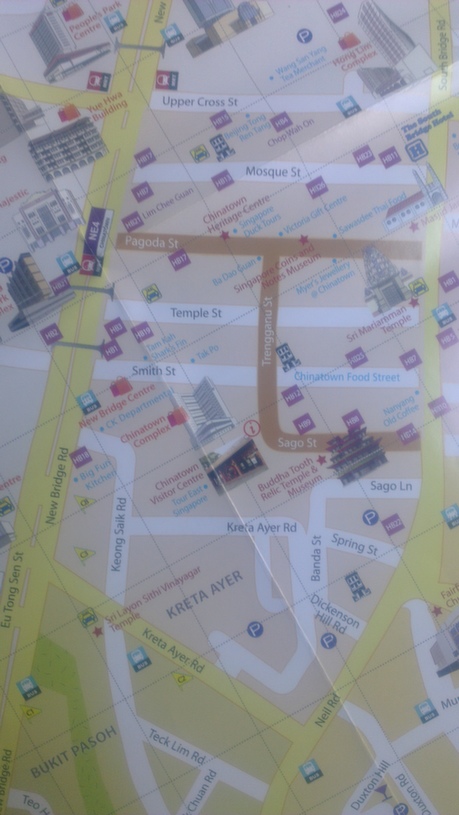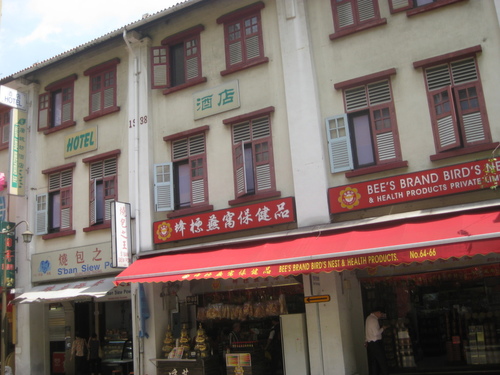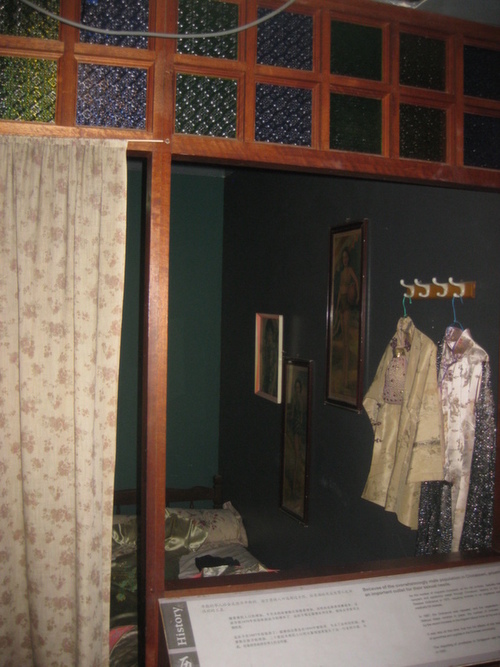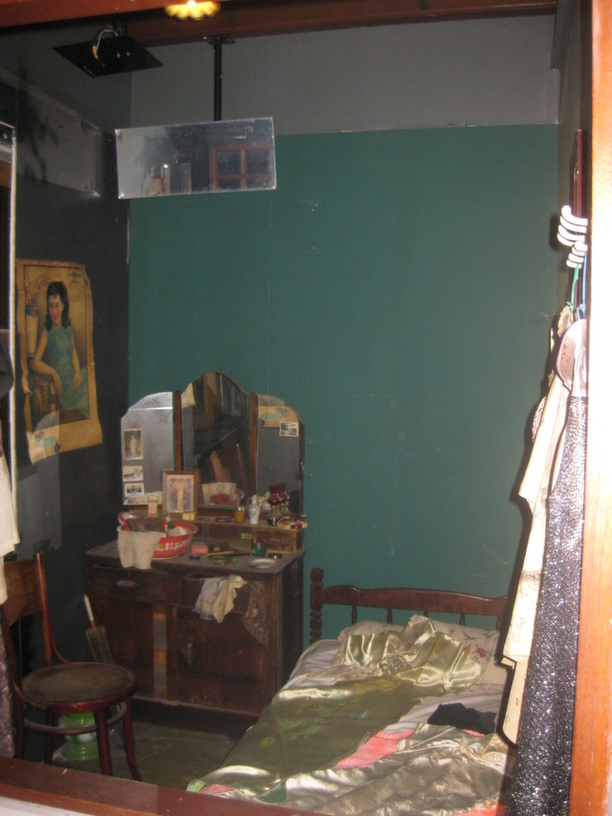Smith Street, Temple Street, Japanese Street and Banda Street; all adjoining streets in today’s Chinatown had one thing in common during the colonial times. Three and four-storey brothels which along with prostitution, also promoted opium smoking, drinking and gambling


When Raffles founded modern Singapore as a British trading settlement in 1819, migrants poured in the island from China, India and Malaya. As the number of migrants increased, which were overwhelming males settling in the areas around Chinatown, brothels became an important outlet for their sexual needs. These migrants or sinkhehs came to Si Lat Po(Singapore’s old Chinese name) without their wives and found solace in the arms of Ah Ku or prostitutes.
Slowly, Chinatown was flooded with tea-houses, theatres and opium dens tended by young singsong girls locally known as Pei Pa Chai or Pipa girls. These girls were paid by the hour by rich clients to play mahjong or prepare opium. Many, in due course, were lured into prostitution.
These prostitutes mainly came from China, Japan and Europe. Though, there were no British prostitutes due to a ban imposed by the then British administration of Singapore.
The National Heritage Board (NHB) describes the life of a prostitute in colonial Singapore as “horrendous”. “Once in a brothel, the girls were often subjected to beatings, and received little or no medical attention. Riddled with diseases, these pitiful women were often also murder victims. Seeing no other escape from their living hell, a number of these prostitutes took their own lives. While some threw themselves off buildings, others preferred a more subtle method – an opium overdose,” informs the NHB in one of the placards placed in Chinatown.
Interestingly, by 1923, there were 423 government-run shops selling opium over-the-counter between 6am to 10pm. But in brothels, opium would be available till 2am.
Chinese brothels


Shop no. 64-66 on Smith Street now converted to a hotel and a shop
The most infamous street at the turn of the 20thcentury was the Smith Street, which was lined with 25 three and four-storey shop-houses packed with prostitutes. While two were Japanese, most of the other brothels were Chinese, with the most notorious being the no. 65. It’s owner, Loh Sai Soh, was stabbed when she attempted to stop a customer from leaving without paying. This street served as a red-light area between 1901 and 1930. Adjoining Smith Street was the Temple Street, which got its name after the Sri Mariamman Temple located at one end of the street, and was also famous for its Chinese brothels.


Japanese brothels
Also known as Yap Pun Kai (or the lane of foreign prostitutes) or Japanese Street, this street hosted the few Japanese brothels in colonial Singapore. Notably, “until the pre-war years, Japanese prostitutes plied their trade along this street in an oddly noble effort to help finance their country’s military campaigns,” says NHB. Another street notorious for Japanese brothels till 1930 was the Banda Street located at the junction of Sago Street, Sago Lane and Spring Street.
“Sexually transmitted disease became rampant and epidemics swept through Chinatown, leading to the passing of the Contagious Disease Ordinance in 1870, requiring brothels to be registered and prostitutes to be examined medically for disease. In 1887, the Ordinance was repealed, and the registration of brothels was stopped in 1894. Without these controls in place, the number of brothels increased further. This was fuelled by the record increase in the migrant labour at the end of the century. It was also at this time, that the full effects of the repeal came into effect; the pandemic spread of gonorrhea and syphilis in the Chinese community. The importing of prostitutes to Singapore was finally banned in 1927 and brothels made illegal in 1930,” informs the Chinese Heritage Centre situated in Chinatown, Singapore.


A display at the Chinese Heritage Centre in Chinatown, Singapore, depicting the room of a prostitute in colonial Singapore
All information in this story is courtesy National Heritage Board and Chinese Heritage Centre, Chinatown, Singapore.
Credit: Newzzit

